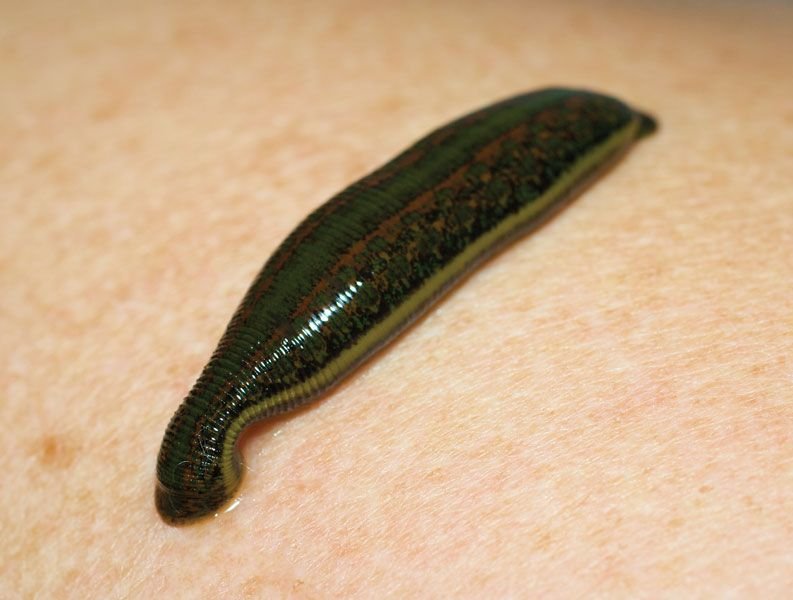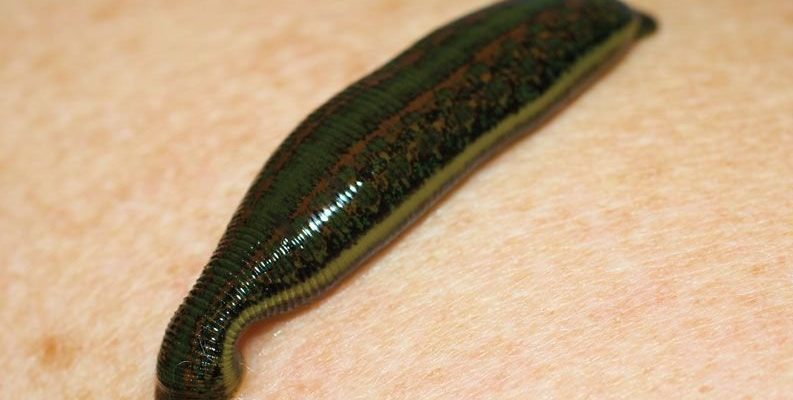
Leeches are a type of segmented worm belonging to the class Hirudinea. They can live in both freshwater and saltwater environments, and they come in various shapes, sizes, and colors. Think of them as nature’s little hitchhikers. Some leeches attach to fish or amphibians to feed while others prefer to stay hidden in the mud. So, what’s the deal with leeches? Are they just parasites, or do they have some ecological perks? Let’s explore!
The Anatomy of a Leech: What Makes Them Unique
You might be wondering what leeches actually look like. Well, they often have elongated, oval bodies that can range from just a few millimeters to over a foot long, depending on the species. Their skin is smooth and usually dull green or brown, allowing them to blend seamlessly into their muddy surroundings. But there’s much more to their bodies than just looks!
Leeches have suction cups at both ends of their bodies. The anterior (or front) sucker is used for attachment and feeding, while the posterior (or back) sucker helps with movement. Imagine a mini vacuum cleaner gliding gracefully through the water—that’s a leech for you! They also have a complicated digestive system, allowing them to consume and store blood for months. So, if you ever find yourself in a leech-infested area, remember: they can last quite a while without a meal!
How Do Leeches Feed?
Now, let’s talk about how leeches get their food. Most people know that leeches are bloodsuckers, but the process is a little more elaborate than just biting in and gulping down. They have mouthparts that secrete an anticoagulant, which is a fancy way of saying it prevents the blood from clotting while they feed. This makes it easier for them to enjoy a nice, juicy meal without much interruption.
When a leech latches onto its host, it inserts its jaws, which have tiny teeth, to make a small incision. You might be thinking, “Ouch!” but it’s usually painless due to the leech’s anticoagulant. Once attached, they can draw blood for anywhere from 30 minutes to several hours, all while their unsuspecting host goes about its day. Isn’t nature wild?
Leeches and Their Habitat
You might be surprised to find out that leeches prefer a variety of habitats. They thrive in freshwater environments like ponds, lakes, and marshes, but some can even be found in wet soil or leaf litter. Leeches love places where they can hide and stay moist. This means they’re often lurking in the mud or under rocks, waiting for the right moment to find a meal.
Interestingly, leeches have an essential role in their ecosystems. By feeding on small fish and amphibians, they help control these populations, keeping the balance of life in check. They’re also prey for various animals, including birds and larger fish. So, while they may seem a little gross, leeches are a vital part of the food chain.
Common Myths About Leeches
Leeches often get a bad rap. There are a lot of myths surrounding these creatures that don’t paint them in a good light. One common misconception is that all leeches are harmful. In reality, there are over 600 species of leeches, and only a small fraction are blood-sucking parasites. Many species actually feed on detritus or small invertebrates!
Another myth is that leeches can cause serious harm to their hosts. While it’s true that some leeches can carry diseases, most are harmless. In fact, some medical professionals even use medicinal leeches to help with certain health issues. They can assist with blood flow in surgeries or help heal wounds—talk about turning the tables on their reputation!
The Benefits of Leeches in Medicine
Speaking of medical uses, let’s take a closer look at how leeches are actually utilized in modern medicine. Hirudo medicinalis, the European medicinal leech, is commonly used in therapeutic settings. They help patients who have undergone reconstructive surgery by improving blood circulation. Isn’t it fascinating how something that often gets a gross label can have healing properties?
Leeches can also help with conditions like arthritis, where their anticoagulant properties provide pain relief. They attach to specific areas, and their saliva helps reduce swelling and promote healing. So, while the thought of a leech may send some people running, in a medical context, they can be lifesavers!
Leeches as Indicators of Water Quality
Leeches can also teach us about the environment. These creatures are sensitive to changes in their habitats. If leeches are present in good numbers, it often indicates a healthy ecosystem. Conversely, a decline in leech populations can signify pollution or other harmful changes in water quality.
This makes them valuable indicators for scientists and naturalists. By studying leech populations, researchers can gather information about water health, guiding conservation efforts. Who knew that these little bloodsuckers could play such a critical role in environmental science?
After exploring the world of leeches, it’s clear that they’re not just slimy creatures to be feared. They play essential roles in ecosystems, offer medical benefits, and even help scientists monitor environmental health. Next time you see a leech, maybe you’ll think twice before recoiling in horror.
So, the next time you find yourself near a pond or marsh, take a moment to appreciate these fascinating creatures. They might be quirky and a bit misunderstood, but they’re truly remarkable in the grand scheme of nature. Embrace the leech!

